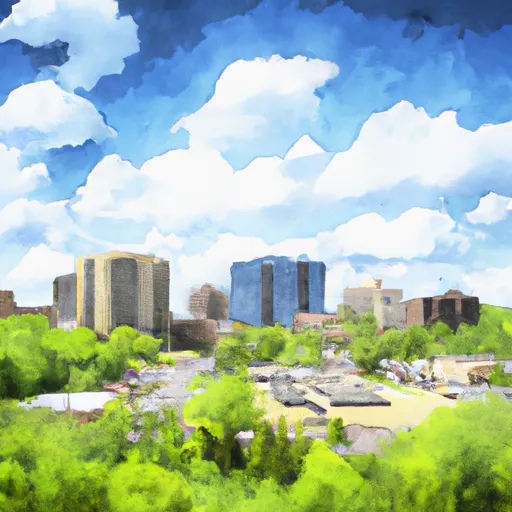-
 Snoflo Premium
Snoflo Premium
Get unlimited access to all our content
With no Ad interruptions! - Start Your Free Trial Login with existing account
Spring-Valley
Eden Index
Climate
6.3
•
Recreation
2.2
•
Community
2.9
•
Safeguard
4.0/10

Spring Valley is a charming city nestled in Fillmore County, Minnesota. Known for its picturesque landscapes, Spring Valley experiences a humid continental climate. Summers are warm and pleasant, with average temperatures ranging from 70°F to 80°F. Winters are cold, with average temperatures hovering around 20°F, often accompanied by significant snowfall.
The city is blessed with abundant hydrological features. The Root River flows nearby, offering opportunities for fishing enthusiasts to catch trout, smallmouth bass, and northern pike. Natural springs are also a prominent feature in Spring Valley, contributing to the city's name. Crystal Cave, a fascinating underground limestone cave system, is a popular attraction for visitors.
Outdoor recreation opportunities abound in Spring Valley. Forestville/Mystery Cave State Park, located just a short distance away, offers miles of hiking and biking trails through scenic forests, as well as camping facilities. The Root River State Trail, a popular biking and walking route, spans over 42 miles, providing stunning views of the river and surrounding landscapes. Additionally, Spring Valley hosts annual events like the Ag Days celebration and the Dam Days festival, which showcase the city's rich heritage and offer festive activities for all ages.
What is the Eden Index?
The Snoflo Eden Index serves as a comprehensive rating system for regions, evaluating their desirability through a holistic assessment of climate health, outdoor recreation opportunities, and natural disaster risk, acknowledging the profound impact of these factors on livability and well-being.
Climate Health Indicator (CHI): 6.3
Spring-Valley receives approximately
873mm of rain per year,
with humidity levels near 83%
and air temperatures averaging around
7°C.
Spring-Valley has a plant hardyness factor of
4, meaning
plants and agriculture in this region thrive during a short period during spring and early summer. Most
plants will die off during the colder winter months.
By considering the ideal temperature range, reliable water supplies, clean air, and stable seasonal rain or snowpacks, the Climate Health Indicator (CHI) underscores the significance of a healthy climate as the foundation for quality living.
A healthy climate is paramount for ensuring a high quality of life and livability in a region, fostering both physical well-being and environmental harmony. This can be characterized by ideal temperatures, reliable access to water supplies, clean air, and consistent seasonal rain or snowpacks.
Weather Forecast
Streamflow Conditions
Upper Mississippi-Black-Root
Area Rivers
Upper Mississippi-Black-Root
Snowpack Depths
Upper Mississippi-Black-Root
Reservoir Storage Capacity
Upper Mississippi-Black-Root
Groundwater Levels
Recreational Opportunity Index (ROI): 2.2
The Recreational Opportunity Index (ROI) recognizes the value of outdoor recreational options, such as parks, hiking trails, camping sites, and fishing spots, while acknowledging that climate plays a pivotal role in ensuring the comfort and consistency of these experiences.
Access to outdoor recreational opportunities, encompassing activities such as parks, hiking, camping, and fishing, is crucial for overall well-being, and the climate plays a pivotal role in enabling and enhancing these experiences, ensuring that individuals can engage in nature-based activities comfortably and consistently.
Camping Areas
| Campground | Campsites | Reservations | Toilets | Showers | Elevation |
|---|---|---|---|---|---|
| Lake Fisher | 6 | 840 ft | |||
| Lake Wapello State Park | 80 | 803 ft | |||
| Finger Lakes State Park | None | 725 ft | |||
| Macon Co Park | None | 873 ft | |||
| Rothwell Park | None | 858 ft | |||
| Long Branch State Park | None | 841 ft | |||
| Drakesville City Park | 6 | 886 ft | |||
| McGowen Rec Area | 12 | 857 ft | |||
| Binder Park | 17 | 655 ft | |||
| Chacauqua River Access | None | 721 ft |
Nearby Fishing
Nearby Ski Areas
Catastrophe Safeguard Index (CSI):
The Catastrophe Safeguard Index (CSI) recognizes that natural disaster risk, encompassing floods, fires, hurricanes, and tornadoes, can drastically affect safety and the overall appeal of an area.
The level of natural disaster risk in a region significantly affects safety and the overall livability, with climate change amplifying these risks by potentially increasing the frequency and intensity of events like floods, fires, hurricanes, and tornadoes, thereby posing substantial challenges to community resilience and well-being.
Community Resilience Indicator (CRI): 2.9
The Community Resilience Indicator (CRI) recognizes that education, healthcare, and socioeconomics are crucial to the well-being of a region. The CRI acknowledges the profound impact of these elements on residents' overall quality of life. By evaluating educational resources, healthcare accessibility, and economic inclusivity, the index captures the essential aspects that contribute to a thriving community, fostering resident satisfaction, equity, and social cohesion.

